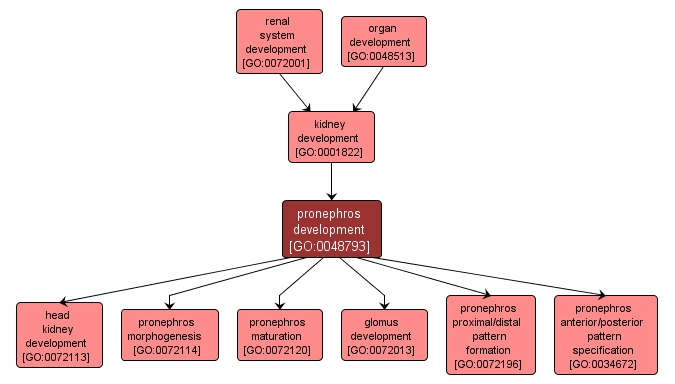| Desc: |
The process whose specific outcome is the progression of the pronephros over time, from its formation to the mature structure. In mammals, the pronephros is the first of the three embryonic kidneys to be established and exists only transiently. In lower vertebrates such as fish and amphibia, the pronephros is the fully functional embryonic kidney and is indispensable for larval life. |














